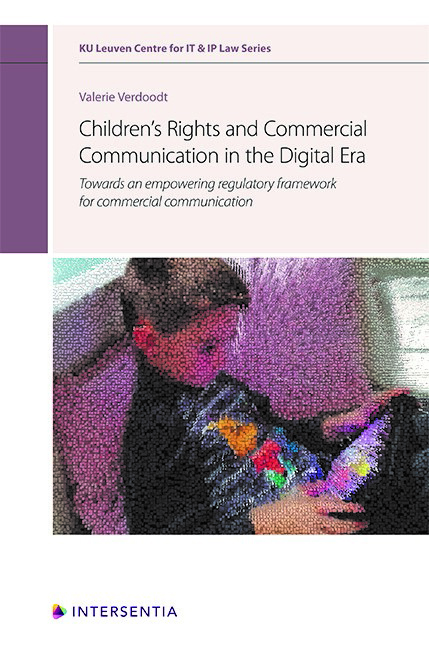 Children's Rights and Commercial Communication in the Digital Era
Children's Rights and Commercial Communication in the Digital Era Published online by Cambridge University Press: 23 July 2020
RETROSPECTIVE. Before presenting the recommendations for the regulatory framework for commercial communication aimed at children this section first looks back on the research findings.
PART I, CHAPTER I
PART I. The first chapter of the first part of the book aimed to gain a clearer understanding of the research issues. More specifically, an in-depth analysis was conducted of the constitutive elements of the study (i.e. children and new forms of commercial communication) and the need for a strong and empowering regulatory framework for commercial communication. It also introduced the children's rights perspective. A number of findings can be recalled:
1. As an introduction to the legal research, the advertising techniques and formats that advertisers employ to target children were analysed. Nowadays, children grow up as digital natives in a media landscape that is constantly evolving as a result of technological advancements and convergence. Traditional and new media are being consumed interchangeably and children split their attention between various screens and sources of media. The changes in the media landscape have driven advertisers to transform their approach to commercial communication. In the digital environment, commercial messages are being distributed through a variety of platforms and on numerous devices, such as tablets, game consoles, smart phones and connected televisions. The specific features of new forms of commercial communication – i.e. their integrated, interactive, personalised and emotions-evoking nature – make it difficult for children to apply their advertising literacy skills. These skills entail both identifying the commercial nature of these messages and being able to process the commercial message in a critical manner, as to allow them to make well-balanced commercial decisions and decisions related to their privacy. In this regard, it was concluded that it remains crucial for children to be educated and enabled to understand the persuasive tactics of emerging trends in the area of commercial communication.
2. The protection of children against certain forms of commercial communication can be traced as an important objective throughout the policy history at the international and EU level from 2008 onwards. Three recurring themes were identified. First, the protection of children against the pressure of advertising and marketing in the digital environment. Second, policy makers have clearly recognised the issues related to the collection of personal data for advertising purposes and the need for the protection of children in this context.
To save this book to your Kindle, first ensure [email protected] is added to your Approved Personal Document E-mail List under your Personal Document Settings on the Manage Your Content and Devices page of your Amazon account. Then enter the ‘name’ part of your Kindle email address below. Find out more about saving to your Kindle.
Note you can select to save to either the @free.kindle.com or @kindle.com variations. ‘@free.kindle.com’ emails are free but can only be saved to your device when it is connected to wi-fi. ‘@kindle.com’ emails can be delivered even when you are not connected to wi-fi, but note that service fees apply.
Find out more about the Kindle Personal Document Service.
To save content items to your account, please confirm that you agree to abide by our usage policies. If this is the first time you use this feature, you will be asked to authorise Cambridge Core to connect with your account. Find out more about saving content to Dropbox.
To save content items to your account, please confirm that you agree to abide by our usage policies. If this is the first time you use this feature, you will be asked to authorise Cambridge Core to connect with your account. Find out more about saving content to Google Drive.